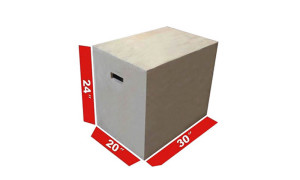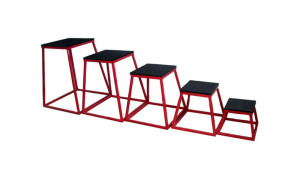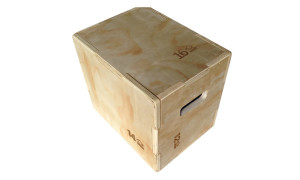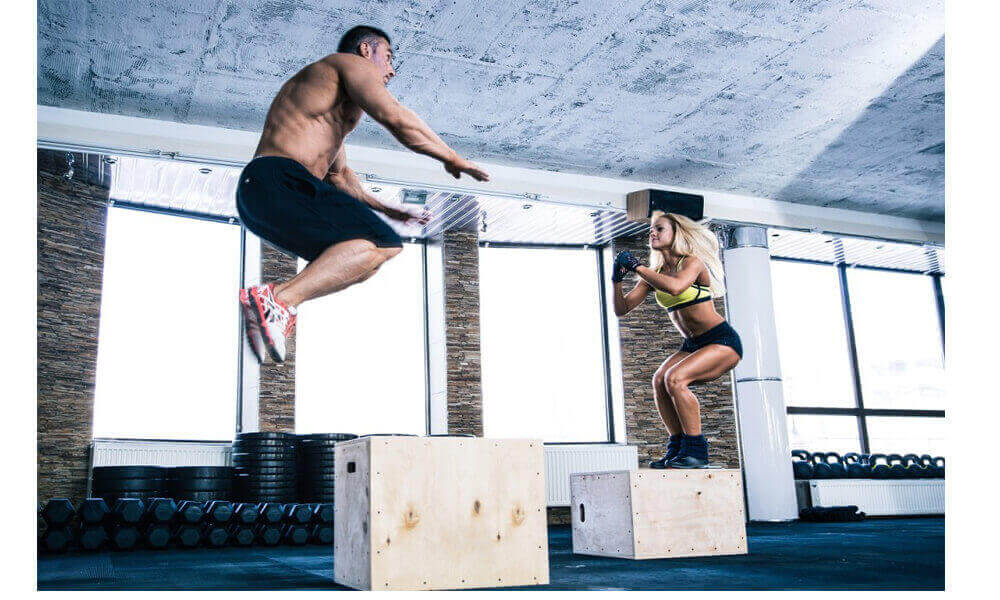Plyo boxes are a staple piece of equipment in Crossfit gyms and sports training facilities that do plyometric training

Be careful not to get too tall of a plyo box to start off with,You want to learn good form, and you’ll sacrifice your form and/or cause injury if you start off with too much effort to jump up onto a tall plyo box without warming up and conditioning yourself for the movement. So take it easy to begin with and get a size that you can do a lot of warmup jumps with.
Box jumping is often done as a conditioning exercise, so when doing it that way you can use a shorter box and see get lots of benefit from it. You will be able to continue your workout with a shorter box when you would have to stop with a taller box because you’re getting too tired and the big jump is starting to get too dangerous.
The most common injury is missing the top, clipping your toe, and slamming into the top edge of the box with your shin, leaving a nasty gash or at least a bruise or painful shin that will leave you adverse to doing the exercise again for a while. But our steel plyo boxes are all made with a layer of rubber on top, so you really won’t drag your shin across it during a failure. It may still hurt, however.
Most men can start with a 20″ box. If you’re shorter than average, don’t feel bad about starting with 16″.
Women can start with a 16″ box.
Crossfit WODs prescribe 24″ or 30″ heights as a standard height.
Beyond just doing workouts, if you want to improve your height, you’ll want to work up to heights by doing a ton of reps at lower heights until you get used to it and get a feel for when you just can’t do another rep safely.
Nowadays you can get wood plyo boxes that can be flipped around on any side, and each side is a different length. So for example a box may come in dimesnsions of 20″ x 24″ x 30″,  and you flip it over to do any of those heights..
and you flip it over to do any of those heights..
A smaller version is available where you can do 16″, 18″ or 20″ or 12″16″18″.
We actually recommend the larger box because the smaller one isn’t quite as stable when you tip it up to be 20″ tall (and only 16″ wide). Some other wooden plyo box are available that are stackable, so you can start off as low as 8″ and go up to a recommended 32″ safely.
Any taller than 30″ or 32″, however, and you’ll need to see about buying steel plyo boxes of the height you need.
People have also done some interesting things like stacked bumper plates up on a steel pole of the right height so that they don’t move, and the bumpers are a bit more of a forgiving edge if you fail the jump.
The latest thing to come out is stackable soft plyo boxes.They are stackable boxes of varying heights and velcro strips, and you can stack them up to any height. They’re like stackable wooden plyo boxes, but the soft but firm texture adds a huge dimension of safety to what is ordinarily a risk of injury when you miss a jump and hit your shin.
Whatever size you get, be sure to set it on a firm, flat, rough surface, preferably rubber flooring. Concrete may be ok, but it can slide more easily than on a rubber surface.

